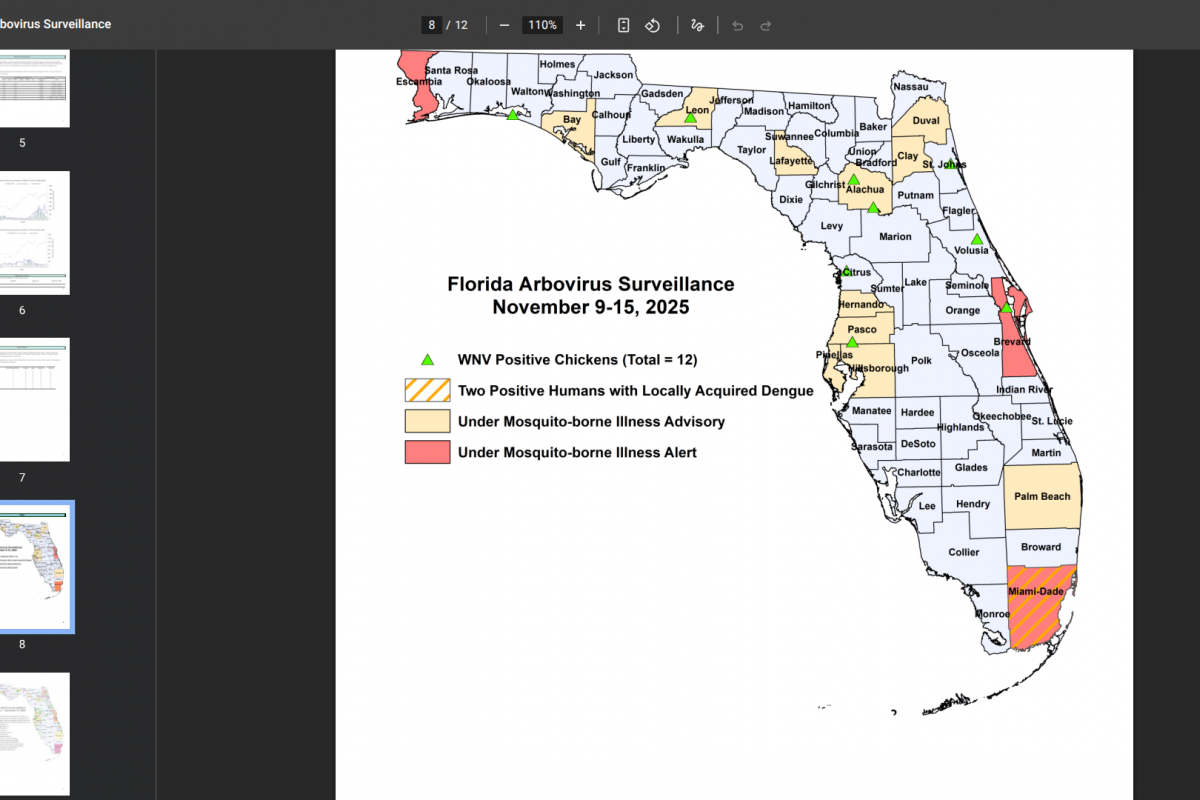Visitors From Cuba Bring Chikungunya, Dengue, Oropouche to Florida – Vax-Before-Travel

Report on Travel-Associated Arbovirus Cases and Implications for Global Health Goals
Executive Summary
A report from the Florida Department of Health (DOH) for Week 46, ending November 15, 2025, details a significant number of travel-associated arbovirus cases originating from Cuba. This data highlights the ongoing challenges in managing cross-border communicable diseases, which directly impacts the achievement of global health objectives outlined in the Sustainable Development Goals (SDGs), particularly SDG 3 (Good Health and Well-being).
Key Findings on Communicable Disease Transmission
The Florida DOH Arbovirus Surveillance Report identified multiple cases of vector-borne diseases among individuals who had recently traveled internationally. The findings underscore the role of international travel in the transmission of communicable diseases, a key concern for global health security.
- Chikungunya: Of the 73 travel-related cases confirmed in Florida in 2025, 62 cases were linked to travel from Cuba.
- Dengue Fever: A total of 355 travel-related cases were reported, with 252 of these cases identified in travelers returning from Cuba.
- Oropouche Fever: One travel-associated case was reported in November in an individual who had traveled from Cuba.
Implications for Sustainable Development Goal 3 (SDG 3)
The importation of these arboviral cases directly relates to specific targets within SDG 3, which aims to ensure healthy lives and promote well-being for all at all ages.
- SDG Target 3.3: This target calls for an end to the epidemics of communicable diseases by 2030. The persistent transmission of Dengue, Chikungunya, and other vector-borne diseases across borders demonstrates a significant hurdle to achieving this goal and necessitates robust public health interventions.
- SDG Target 3.d: This target focuses on strengthening the capacity of all countries for early warning, risk reduction, and management of national and global health risks. The surveillance data from Florida serves as an early warning mechanism, while the recommendations from public health bodies like the U.S. CDC are critical components of risk management.
Public Health Recommendations and Alignment with Global Health Targets
In response to these health risks and in alignment with SDG Target 3.d, the U.S. Centers for Disease Control and Prevention (CDC) advises proactive health measures for individuals traveling to Cuba. These recommendations are essential for both individual protection and the collective goal of preventing the international spread of disease.
- Travelers should consult a healthcare provider at least one month before their trip to discuss potential health risks.
- A thorough review of necessary vaccines and preventative medicines is strongly recommended.
- Pre-travel health services, including vaccinations, are accessible at clinics and pharmacies across the United States.
By adhering to these preventative strategies, travelers can safeguard their own health and contribute to the global effort to control communicable diseases, supporting the successful realization of SDG 3.
1. Which SDGs are addressed or connected to the issues highlighted in the article?
SDG 3: Good Health and Well-being
- The entire article focuses on public health issues, specifically the spread of infectious, communicable diseases such as chikungunya, dengue fever, and Oropouche. It discusses the diagnosis of these diseases in travelers, which directly relates to ensuring healthy lives and promoting well-being for all at all ages. The mention of surveillance reports and travel health advisories further solidifies its connection to public health systems and disease prevention.
2. What specific targets under those SDGs can be identified based on the article’s content?
Target 3.3: By 2030, end the epidemics of AIDS, tuberculosis, malaria and neglected tropical diseases and combat hepatitis, water-borne diseases and other communicable diseases.
- The article directly addresses this target by reporting on cases of communicable, vector-borne diseases. The mention of specific numbers for “chikungunya” (73 cases) and “dengue fever” (355 cases) highlights the ongoing challenge of combating these diseases, which is the central aim of this target.
Target 3.d: Strengthen the capacity of all countries, in particular developing countries, for early warning, risk reduction and management of national and global health risks.
- This target is addressed through the article’s reference to the “Florida Department of Health (DOH), Arbovirus Surveillance Report.” This report is a clear example of a system for early warning and management of health risks. Furthermore, the advice from the “U.S. CDC” for travelers to “check the vaccines and medicines list” represents a form of risk reduction and management for global health threats posed by cross-border disease transmission.
3. Are there any indicators mentioned or implied in the article that can be used to measure progress towards the identified targets?
Indicator for Target 3.3
- The article provides direct data that can be used as a measure for indicators related to the incidence of communicable diseases. While not framed as an official SDG indicator, the specific numbers reported—“73 travel-related cases of chikungunya” and “355 cases of dengue fever”—serve as direct measurements of the prevalence of these diseases within a specific population and timeframe. Tracking these numbers over time would measure progress toward ending epidemics.
Indicator for Target 3.d
- The article implies the existence and functioning of systems measured by Indicator 3.d.1: International Health Regulations (IHR) capacity and health emergency preparedness. The existence of the “Arbovirus Surveillance Report” demonstrates a functioning disease surveillance system, which is a core capacity of the IHR. The proactive travel health advice issued by the “U.S. CDC” also demonstrates a country’s capacity for risk communication and health emergency preparedness.
4. Create a table with three columns titled ‘SDGs, Targets and Indicators’ to present the findings from analyzing the article.
| SDGs | Targets | Indicators |
|---|---|---|
| SDG 3: Good Health and Well-being | 3.3: By 2030, end the epidemics of… communicable diseases. | The incidence rate of specific communicable diseases, as measured by the article’s data: “73 travel-related cases of chikungunya” and “355 cases of dengue fever.” |
| SDG 3: Good Health and Well-being | 3.d: Strengthen the capacity of all countries… for early warning, risk reduction and management of national and global health risks. | The existence and functioning of national public health surveillance and risk communication systems, as evidenced by the “Florida Department of Health (DOH), Arbovirus Surveillance Report” and travel advisories from the “U.S. CDC.” |
Source: vax-before-travel.com
What is Your Reaction?
 Like
0
Like
0
 Dislike
0
Dislike
0
 Love
0
Love
0
 Funny
0
Funny
0
 Angry
0
Angry
0
 Sad
0
Sad
0
 Wow
0
Wow
0















































































